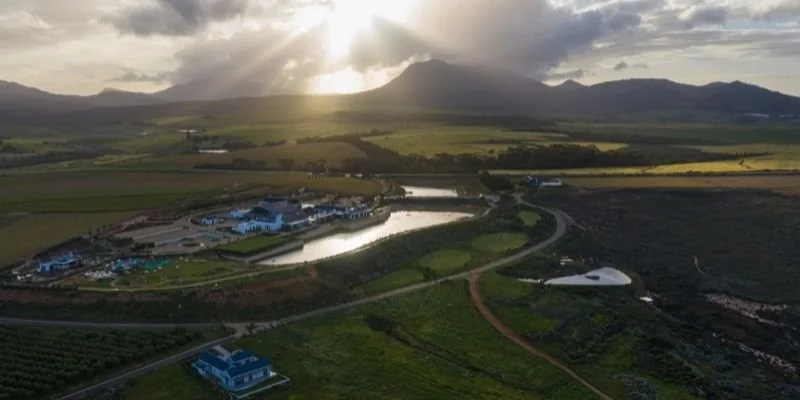The Cool Climate Wine Story
Benguela Cove produces cool climate wines - which may surprise many wine enthusiasts, who perhaps equate the Western Cape region of South Africa, where this beautiful vineyard is located, with deliciously hot summer days. Surely cool climate wines are more usually associated with cooler regions, such as Germany’s Mosel Valley or the mountains of Trentino in Italy?
In fact, cool-climate locations are often found within mainly warm regions. Benguela Cove Lagoon Wine Estate is a prime example. It is located in a lagoon at Walker Bay in Hermanus, separated by only a narrow lagoon from the frigid Atlantic Ocean. It is the lowest-lying vineyard, with the longest seaboard of any vineyard in the world, with average sea temperatures ranging from 15C to 21C.
The growing season may be warm, and even sweltering during the summer, but the Benguela current, which flows up from Antarctica, keeps daytime temperatures down and cools the grapes - which cellar master Johann Fourie considers to be a perfect combination to achieve the estate’s distinctive viticulture and award-winning wines.
Cool vs. Warm Climate Wines
So, what is the distinction between cool and warm climate wines?
Cool climate grapes ripen more slowly, resulting in intense flavours, with lower natural sugars and higher acidity. If the fruit notes in a glass of red wine are ripe or jammy, with a deep red or purple colour, the wine was probably produced in a warm climate. If the taste is acidic or delicate, like a freshly plucked raspberry, it was most likely from a cooler location.
Cool climate whites often have a green tinge, but this could be just because of the wine's youthful age. They are generally described as lean, tangy, green apple, lemon and lime. White wines from warm climates are tropical, rich and ripe.
The warm climate usually produces higher alcohol content, at some 12 to 15 per cent, compared to 10 to 13 per cent in cool regions.
Cool climate wines produce lower harvest yields than warmer zones. Winters present particular challenges, with cold temperatures causing damage to the vines or even destroying a vintage - but fortunately not in South Africa.
Spring frosts have caused significant losses for growers in Chablis, Burgundy, and Bordeaux in recent years. The coldest April night in France since 1947 occurred in 2022.
So do winegrowers prefer warmer temperatures, given the challenges of cooler locations?
More sunlight and consistent weather result in wines with a fuller body and flavours. Grapes ripen more quickly and produce more sugars, resulting in the higher alcohol levels. Darker fruit flavours, such as plums, blueberries, and blackberries predominate, with some wines displaying chocolate overtones.
Warm-climate viticulture, however, has its drawbacks.
Some Like it Cool
Producers may have to work hard to maintain the acidity in the fruits, which diminishes as sugar levels grow, and to guarantee that their wines taste fresh rather than, in the worst cast, cooked, shapeless and flabby. The cellar master can take steps in the winery to deal with this, such as adding acid and even lowering alcohol levels, which is a contentious but common practice in large commercial vineyards.
Ultimately, the choice and popularity of cool or warm climate wines will depend upon the wine drinker's preference. Cool climate wines, with lower sugar and alcohol levels, have grown increasingly popular. The fruit flavours tend to be more subtle, because of the longer ripening time. The wines are lighter in body and often show spicey, floral, and pleasing herbaceous notes.
Johann Fourie believes that they offer a greater opportunity to practice the winemaker’s arts, especially in the blending and fermentation process, to achieve a precise and subtle balance in the wines from each harvest that ultimately grace the table of lovers of Benguela Cove wines.
At the Mannings Heath Golf and Wine Estate in the UK, Johann has further opportunity to practice the art of cool-climate winemaking at the 34-acre vineyard, planted in 2017. The first release will be in 2023, with an estimated production of some 70,000 bottles annually, Chardonnay, Pinot Noir, and Pinot Meunier sparkling wine cultivars







